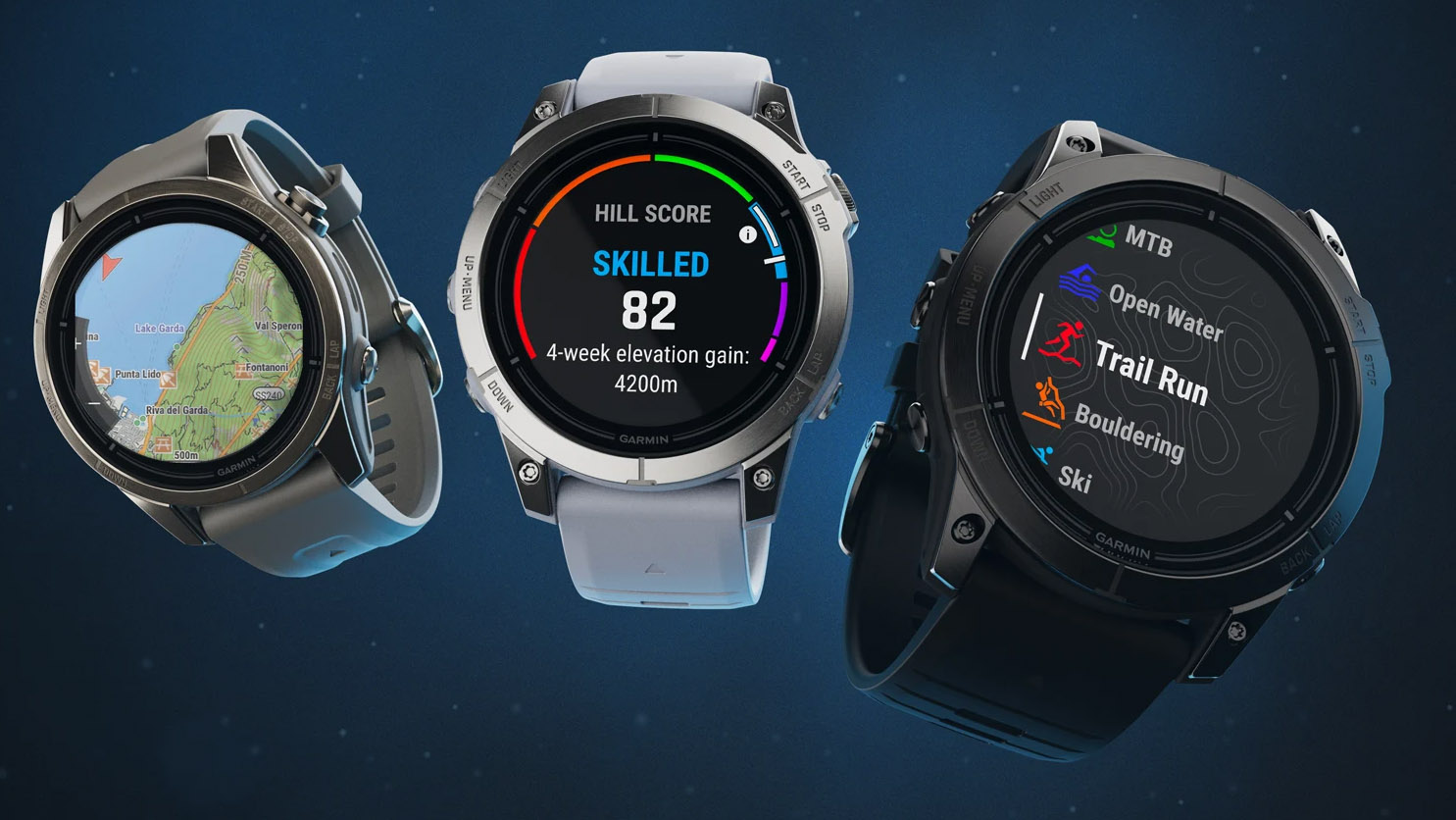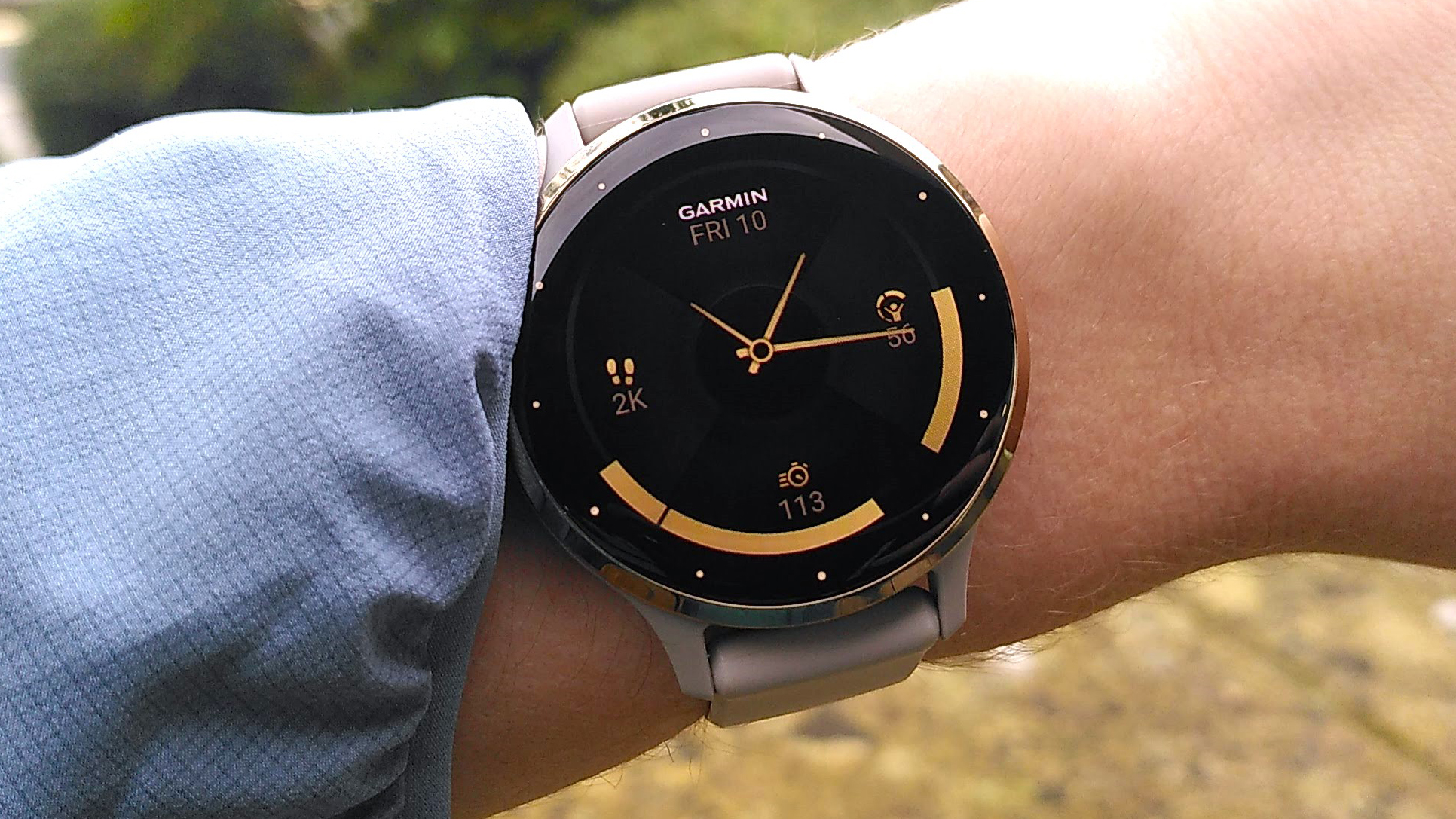
Garmin boasts a wide range of watches that provide high-tech GPS tracking, fitness monitoring, and plenty of sports modes. Different models cater to different sportspeople at different price points. Among the Garmin range, you can find expensive, multi-purpose watches like the Fenix 8 and Forerunner 965, and cheaper alternatives like the Forerunner 55.
The watch pictured above is the Forerunner 255.
Fitness tracking is at the core of all Fitbit devices. The first Fitbits were pedometer-style wearables that counted your steps and measured sleep patterns. Top-end Fitbit models monitor your steps, sleep, heart rate, stress, respiration, blood oxygen saturation, and workouts.
The watch pictured above is the Fitbit Charge 5.
If you've been pondering purchasing one of the best Garmin watches, chances are you will also have considered other brands.
Garmin and Fitbit are two heavyweights of the fitness wearables world. Both have been around for a while and aim to bolster your performance with a wide array of health and fitness monitors.
Garmin has more than two decades of experience crafting reliable sports watches. In that time, their trademark fitness wearables have incorporated more and more technology.
Fitbit's range of fitness wearables is focused on performance. Each model tracks multiple crucial health metrics to paint a clear image of your health and well-being.
In 2021, Fitbit was taken over by Google, which ceased the production of all new Fitbit devices and instead focused on the Google Pixel watch line. Internal support for Fitbits has dwindled, while Google Pixel watches have thrived. We'll be considering the new Pixel 3 model alongside old Fitbits.
Both Garmin and Fitbit offer a wide range of different models, suitable for all manner of athletes and available at several different price points.
If you're not sure which watch to choose, we've rounded up all the key information to help you make a decision.
The Verdict
Although they fall into similar categories, Garmin and Fitbit devices generally suit different needs. Ultimately, it comes down to detail and price.
Garmin GPS watches are high-tech health trackers that monitor every aspect of your fitness to paint a vivid portrait of your well-being. They're very functional, featuring multiple sports modes and accurate GPS tracking to help put that data to good use.
Fitbit wearables also track your health but generally do so in less detail. Many models don't feature the high-tech GPS or sports modes of their Garmin counterparts. However, they're considerably cheaper and usually good value for money.
If you want to track every inch of your health and training, a good Garmin watch is the one for you. While high-end Fitbit devices like the Versa 3 and Google Pixel 3, can almost live up to this, generally the range is aimed at simpler requirements.
Mid-range and budget Fitbits are cheap and easy-to-use fitness trackers that do their job well without the bells and whistles of their Garmin counterparts.
Pros and cons
Both brands have their various strengths and weaknesses, which set them apart in different areas.
Garmin Pros
- Typically rugged and durable
- Long-lasting battery lives
- Reliable GPS tracking
- A wide variety of accurate fitness trackers
- Multiple training modes
- Some models can make and receive calls
Fitbit Pros
- Solid selection of accurate health and fitness trackers
- A variety of affordable budget options
- Generally easy to use with a simple user interface
- Some models have GPS

Garmin cons
- High-end options are very pricey
- Susceptible to bugs and can occasionally crash
- Complex user interface
Fitbit cons
- Don't offer the same in-depth statistics as Garmin devices
- Many devices aren't supported by Google
- Not compatible with iPhones
- No new Fitbit models
Price
- Garmin watches tend to be more expensive
- Fitbit offers a greater selection of budget options
Garmin watches are generally more expensive than Fitbit devices.
Top-end Garmin models like the new Fenix 8 will set you back up to $1,199.99 (£1,199.99). For that price, you'll receive super-accurate GPS, a wide range of sports modes, insightful health monitors, and much more.
Fitbit's top-of-the-range models are drastically cheaper. The super-smart Fitbit Sense 2 is now available for just $199.95 (£219.99). Google's flagship Google Pixel 3 watch is also comparatively cheaper, retailing for just $339.99 (£349) in its largest 45mm size.
This trend repeats itself throughout the Garmin and Fitbit ranges. Whether you're comparing top-end, mid-range, or budget watches, Fitbit always comes up cheaper.
You can find a budget Fitbit device like the Inspire 3 for less than $70 (£54) on Backcountry or Amazon, but you'll need to fork out upwards of $140 (£109) for a wallet-friendly Garmin like the Forerunner 55.
That said, a budget Garmin gives you far more bang for your buck, with many more features than a low-end Fitbit.
GPS
- Most Garmin's feature accurate GPS tracking
- Not all Fitbits have GPS
Garmin watches excel in GPS tracking, offering an accurate, easily understandable picture of your whereabouts at all times. Most models have the feature and record GPS activity without the need to use your phone.
Due to their origins as pedometers, not all Fitbit devices feature GPS tracking, and some require your phone's GPS sensors to map your route when you're exercising outdoors.
A few Fitbit models, like the Versa 3 and Google Pixel 3, have built-in GPS tracking, which is easily accessible and generally accurate, according to reviews from our sister site TechRadar.
Health trackers and sports modes
- Garmin watches tend to have more advanced health monitors
- Fitbit offers a decent selection of easy-to-understand trackers
Garmin watches typically offer a greater variety of in-depth health tracking features than Fitbits, which paint a simpler picture of your overall health with a few easy-to-understand fitness metrics.
Alongside standard health measurements like your heart rate and sleep levels, top-end Garmin models like the Epix (Gen 2) record less common statistics like your hydration levels and jet lag.
The Epix (Gen 2) also includes a wide range of sports modes. These keep you updated while training with real-time information on your stamina, performance, and more.
Budget Garmin models don't go into as much depth but still offer an insightful and generally accurate image of your overall health with a decent selection of trackers.

Fitbit devices generally track fewer health metrics than their Garmin counterparts, but top-end models still offer a decent selection. The Fitbit Versa 3 accurately tracks multiple fitness metrics, including your steps, heart rate, calories burned, sleep, and blood oxygen levels.
The Google Pixel 3 also includes a good selection of trackers and sports modes. Features like the tempo and cadence monitors keep track of your run and help you smash your personal best.
Cheaper Fitbit devices monitor less. The Inspire 3 monitors your heart rate, steps, calories, Active Zone Minutes, stress, SpO2, and sleep - less than top-end Fitbits and most Garmin watches but an excellent selection for its price tag of just $70 (£54).
Display and watchface
- Both Garmin and Fitbit devices use AMOLED and OLED displays
- Some Garmin watches offer greater screen protection
Garmin and Fitbit are relatively similar when it comes to displays and watchfaces.
Both use AMOLED, OLED, and MIP displays in their different devices. Top-of-the-range devices use ultra-bright and colorful AMOLED displays, which remain visible even in the brightest sunshine.
Some models, like the Garmin Forerunner 955 and Google Pixel 3 are touchscreen and can be controlled by simply swiping your finger.
Most Garmin and Fitbit devices are protected by the same corning gorilla glass, a tough, scratch-resistant glass designed to survive heavy wear in the wilderness.
Smartwatch features
- Budget Fitbit devices lack the smartwatch features of most Garmin watches
- Google Pixel 3 is built for everyday use
Top-end Garmin and Fitbit models both include multiple smartwatch features that are handy for everyday use.
High-end Garmin models like the Fenix 8 and Venu 3 allow you to make and receive phone calls as long as your phone is nearby and connected by Bluetooth. Both of these watches are voice-activated and feature many more handy smartwatch features like notifications, ample storage, and Garmin Pay.
The Google Pixel 3 features many of the same useful lifestyle features. It's voice-activated, connects to Bluetooth, and uses Google Pay for contactless payments.

But there's a catch: the Google Pixel 3 watch will only pair with Android or Google phones. So, you can't make or receive calls, get notifications, or access multiple other functions if you have an iPhone.
The Fitbit Versa 3 doesn't have this issue but faces other limitations. It can pair with your iPhone to receive calls and texts but doesn't allow you to make outgoing calls.
Budget Fitbit models are fitness-focused, and do away with most smartwatch options altogether.
- The best GPS watches: feature-packed timepieces to keep you on course
- The best GPS watches: feature-packed timepieces to keep you on course







